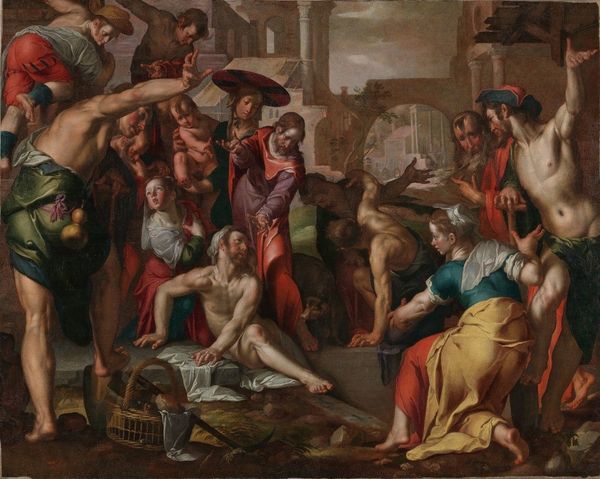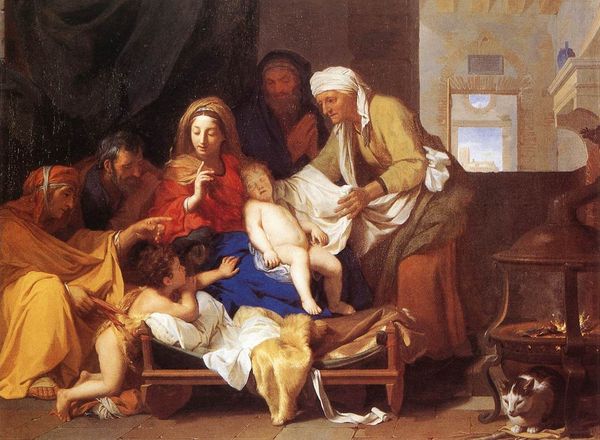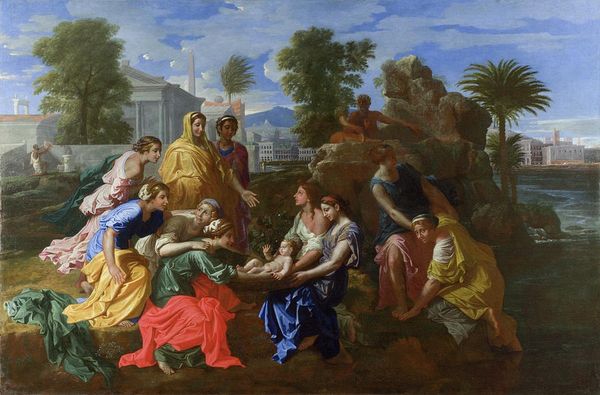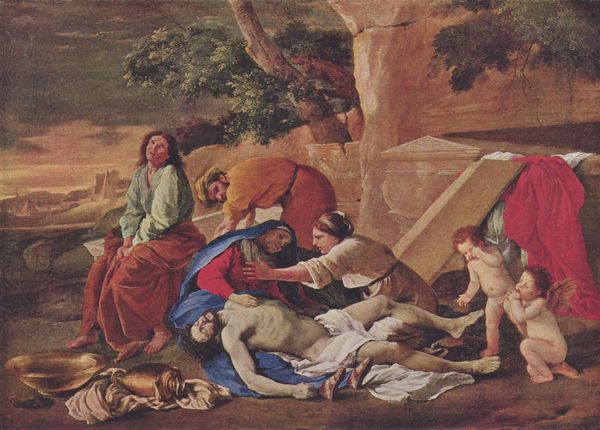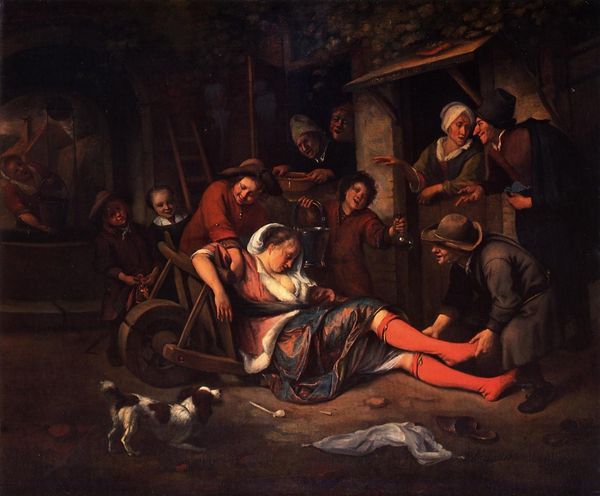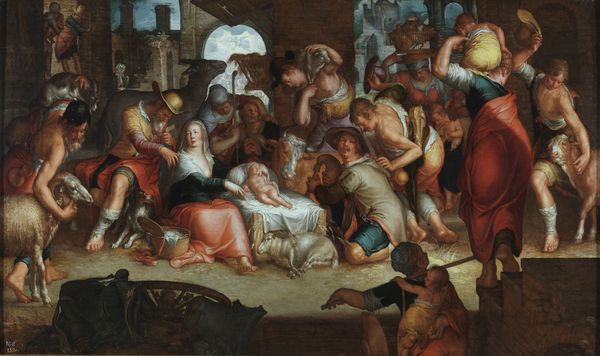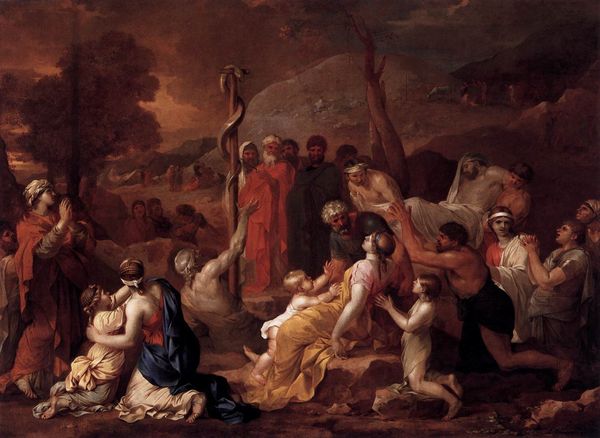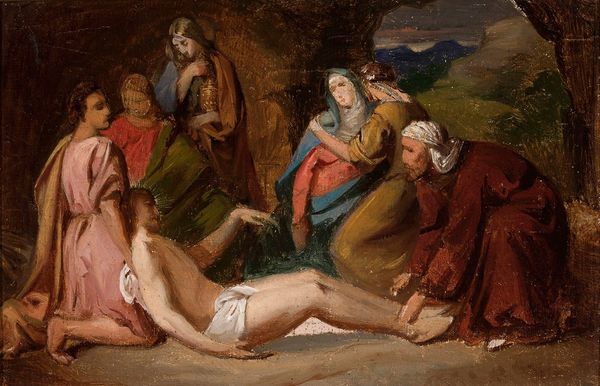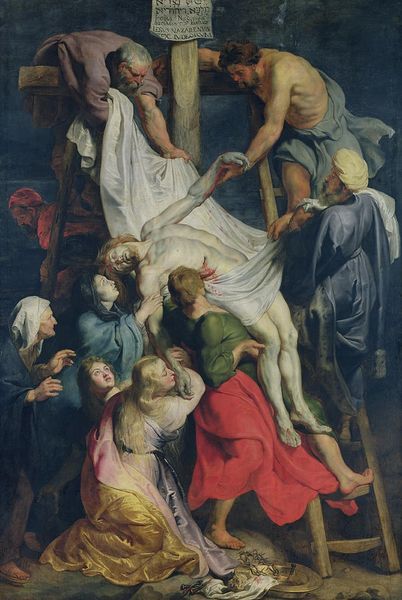
painting, oil-paint
#
portrait
#
baroque
#
painting
#
oil-paint
#
landscape
#
figuration
#
oil painting
#
underpainting
#
painterly
#
painting painterly
#
history-painting
#
portrait art
#
fine art portrait
Copyright: Public Domain: Artvee
Curator: This is Nicolas Poussin's "The Adoration of the Shepherds," an oil painting dating from about 1653. Editor: Immediately, I’m struck by the rather subdued palette, a dramatic contrast to the brilliance we often associate with Baroque art. There's a feeling of profound solemnity and introspection, even amongst this gathering of shepherds. Curator: Precisely. Note how Poussin organizes the figures along a clear horizontal plane, anchoring them to the architectural setting. It's a composition rooted in classical ideals of balance and order, quite distinct from, say, Bernini's ecstatic dynamism. See the classical poses and drapery of the figures? It almost recalls a frieze. Editor: While visually compelling, these classical tropes feel strangely at odds with the inherent radicalism of the nativity narrative. A God born amongst the marginalized, visited first by working-class shepherds… Where's the indication of social disruption, or the reversal of fortune so integral to the gospel story? I'm trying to connect this scene to similar social and political contexts present at the time, especially among working classes. Curator: Consider that Poussin was not aiming for reportage, but rather conveying a sense of timeless spiritual truth through formal structure. The shepherds, despite their rustic appearance, are ennobled, integrated into a scene of elevated decorum. Observe the meticulous details. See how Poussin employs underpainting? Editor: While this is beautiful to see, the emphasis on compositional harmony seems to inadvertently reinforce existing hierarchies. And I cannot help but notice what appears to be a noticeable absence of female shepherds. Where are the women in the Nativity story depicted through Poussin’s work? I am thinking specifically about female leadership, their contributions and importance for working people as they should also be remembered within the Nativity scene. Curator: True. One could read that as a cultural bias of the time being reproduced in art. However, look closely at the gestures. They point towards a kind of shared, almost silent reverence. There’s no need for dramatic flair when the event speaks for itself. And perhaps there's universality being presented; one can read the subjects to mean many different things, not merely be about one experience. Editor: That’s certainly a generous reading. Poussin undoubtedly mastered the art of restrained expression within carefully structured forms. This image remains thought-provoking and invites us to analyze the political and historical meanings to be revealed by its creation. Curator: I find it equally engaging as an exercise in pictorial architecture and emotional restraint. Thank you for speaking with me today.
Comments
No comments
Be the first to comment and join the conversation on the ultimate creative platform.

